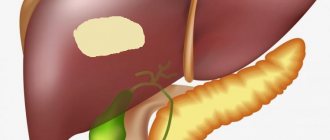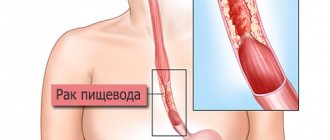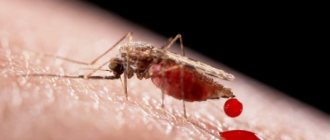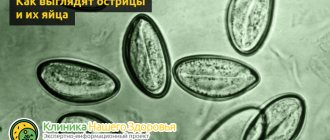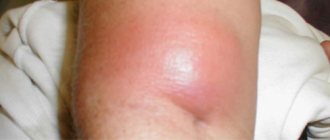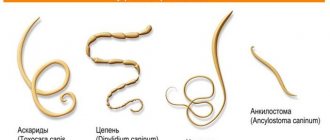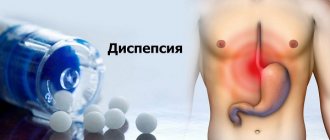Doctors say that infectious diseases have claimed more lives throughout human existence than continuous wars. The leading role in this belongs to especially dangerous infections, which include cholera. Thousands of people die from this disease every year, the exact number of deaths is difficult to calculate, and statistics are deliberately downplayed.
Why is cholera so difficult to fight? What features does this bacterium have? How does the infection occur and why does the disease claim millions of lives? How is cholera transmitted and what can be done to prevent it? What would be helpful for people traveling to countries with annual disease outbreaks to know?
What is cholera
Throughout the history of mankind, scientists have counted 7 massive outbreaks or pandemics of cholera, each of which claimed thousands and even millions of lives. Now hundreds and thousands of people die every year, depending on the area where the infection occurs.
But cholera was known in ancient times. Hippocrates and Galen also spoke about it in their works. In European countries, they became more interested in the causative agent of the disease in the 19th century, which contributed to a more thorough study of not only the causes and routes of transmission of cholera, but also measures to prevent the disease. Scientists believe that this was the impetus for improving the water supply system. The interest of biologists helped to discover two main variants of the pathogen - classical and El-Tor vibrio, named after the station where this species was discovered.
Due to frequent outbreaks of the disease and a large number of deaths, cholera is a particularly dangerous type of infection. Therefore, the incidence rate is monitored annually by local health systems and WHO.
The causative agent of cholera
The infection is of the bacterial type, that is, the causative agent of cholera is bacteria. About 150 serogroups of vibrios are known in nature. But the cause of the serious illness is two variants of the pathogen - classic and El Tor.
Vibrio cholerae (vibrio cholerae) is a special type of bacteria in the form of straight or slightly curved rods with one or two flagella. They do not form spores or capsules, love an alkaline environment (therefore they prefer to reproduce in the human intestine), and are easy to grow in a laboratory. Another feature of bacteria is their high enzymatic activity, which helps them decompose many complex carbohydrates in the human body and not only.
The distinctive features of the causative agent of cholera are as follows.
- Sensitive to dryness and light.
- Vibrio cholerae does not feel comfortable in acid and quickly dies under the influence of antiseptics and conventional disinfectants.
- It does not like high temperatures (it dies almost immediately when boiled) and the effects of antibiotics.
- It persists for a long time in feces, bed linen, and soil.
- The causative agent of cholera loves water, that is, it is able to survive there for a long time.
- There are two important differences in the structure of bacteria - endo and exotoxins. These are protein-lipid structures that are the first to be released in the event of destruction of the pathogen.
- Cholera toxin or exotoxin is its damaging factor, which leads to numerous changes in the human body, in particular, it is released in the intestines, which is why it is also called enterotoxin.
- Another feature of Vibrio cholerae is that it can exist peacefully in the human body for a long time thanks to antigens (flagellar or H and heat-stable or endotoxin O).
Bacteria are present in the environment and in the human body for years and even centuries.
Epidemiology of cholera
Cholera epidemics occur annually and involve millions of cases and thousands of deaths. The number of countries where it is not possible to get rid of the pathogen includes mainly developing ones. Southeast Asia is the leader in the number of cases. The countries of Africa and Latin America are not far behind them.
Sporadic cases of cholera (periodic outbreaks of the disease) are also observed in Russia. In most cases, these are imported infections or the result of the influence of neighboring countries.
From the beginning of the 19th century, namely in 1816, until the end of the 20th century in 1975, scientists counted 7 cholera pandemics, when the disease easily spread to many countries (Russia, India, England, USA, Japan). And although no more pandemics have been recorded yet, cholera is still among the most dangerous diseases, since it is not possible to destroy the pathogen.
Why can't you get rid of bacteria?
- Without special treatment, vibrios are stable in the external environment.
- The main risk factors for cholera infection are contaminated water, contact with a sick person or bacteria-transmitting agent, and consumption of contaminated foods. The disease still flourishes due to imperfect water supply systems in developing countries, lack of disinfection of sewage water and a large number of cholera bacteria. According to doctors, the number of the latter exceeds the number of sick people by 4 times.
- Bacteria are able to mutate, which helps them become more resistant in the external environment. In the history of the development of infection, a case was recorded when cholera vibrio was re-isolated from sludge treated with disinfectants, but no cases of the disease were observed in humans.
Growth and reproduction of bacteria
Vibrio cholerae is relatively resistant to environmental factors. It persists for weeks and months in fresh and sea water. Not sensitive to low temperatures. The comfort zone for the cholera pathogen is an alkaline environment.
We recommend reading:
Details about typhoid fever: symptoms, characteristics of the pathogen, analysis and treatment
Vibrio cholerae is destroyed by the following effects:
- high temperature (pasteurization and boiling);
- exposure to sunlight;
- treatment with disinfectant solutions, chlorine-containing reagents are especially effective;
- the influence of acid-containing substances, including hydrochloric acid of gastric juice.
In this regard, not only people with a low level of sanitary culture, but also patients with chronic pathology of the digestive canal (hypoacid gastritis) are most susceptible to cholera infection.
Reasons for the spread of the disease
How can you get an infection? The transmission mechanism characteristic of cholera is fecal-oral, that is, through contaminated environmental objects. It is not always possible to perfectly treat all surfaces and household items around a sick person. At the same time, the pathogen, being around, is transmitted to healthy people through unwashed hands.
What are the routes of transmission of cholera?
- Waterborne when swimming in open contaminated waters, if you drink water contaminated with cholera bacteria or wash food in such water. This path is considered the leading one.
- Contact during communication or as a result of touching an infected person or bacteria carrier at the time the cholera pathogen is released into the environment.
- Can a person become infected with cholera through food? - yes, it is called alimentary, when a person eats contaminated foods. Moreover, they themselves may contain cholera vibrios or the bacteria may get onto the products during processing when an infected person, say, sneezed on the product during active bacterial excretion.
What are the ways for bacteria to enter the human body during cholera? - only through the mouth. It has been established that many animals are capable of accumulating the causative agent of cholera and spreading it when they eat them. For example, unprocessed oysters, fish, shrimp and shellfish, in which the pathogen sometimes persists for years, can serve as a temporary reservoir of infection.
Another cause of cholera infection or one of the factors of infection transmission are insects, on whose body vibrios can be found after contact with a patient. Therefore, during the development of epidemics, it is better to avoid encounters with flies, cockroaches, and mosquitoes.
The reservoir of infection is always a sick person who can infect others for several weeks after the illness. People with mild, chronic forms of the disease during the period of exacerbation and bacteria carriers also play an important role in the spread of cholera.
The causative agent of cholera: etiology and epidemiology
Vibrio cholerae is a representative of the Vibrio genus, an aerobic gram-negative motile bacterium. Outwardly it resembles a comma due to its curved rod-shaped shape and flagellum, and has dimensions of no more than 4x0.4 microns.
Photo of the causative agent of cholera Vibrio cholerae
Based on the structure of the somatic O-antigen, 140 serogroups of the pathogen are distinguished, of which the causes of cholera are O1 and O139. In the first, strain varieties such as eltor (the culprit of the latest pandemic) and cholerae are of particular importance. These biovars also have 3 serotypes: Hikojima, Ogawa and Inaba. All other vibrios are labeled with the abbreviation non-O1 and are considered opportunistic or non-pathogenic.
The pathogen multiplies in the water of both fresh and salt water bodies, namely in plankton. Vibrio carriers and sick people are also sources of infection. Once in the intestine, the bacterium produces a protein exotoxin that interacts with epithelial cells. As a result, the synthesis of cyclic adenosine monophosphate is activated in them, which leads to the release of water and ions and, accordingly, diarrhea and dehydration of the body.
WHO reports several million cases (3 to 5) annually in underdeveloped regions. It is difficult to judge the reliability of the information, since often the next outbreak of cholera in endemic foci of India or Africa is not advertised. The concealment of such information is due to the authorities’ concerns about the outflow of tourists. The mortality rate is about 100 thousand people per year.
Since the infection is transmitted predominantly through the fecal-oral route, the main factors causing the epidemic are:
- Unsanitary conditions
- Crowded population
- Mass migration
The latter is the cause of imported outbreaks of cholera, characterized by pronounced seasonality (warm seasons) and affecting all age groups. In endemic foci, mostly young children get sick all year round, since adults already have immunity (strong, but only to one type of pathogen). About 5% of those who have recovered become chronic carriers of vibrio in the gallbladder.
What happens in the human body during cholera infection?
Cholera is a cyclic acute infection that may not develop if a person is absolutely healthy and the amount of pathogen that has entered the body is very small. This happens because one of the significant barriers to infection is the acidic environment of the stomach. Bacteria are not friendly with an acidic environment; they quickly lose their pathogenic properties in the gastric contents.
But, having reached the small intestine, the situation changes dramatically, because there is already an alkaline environment in which vibrios feel very comfortable. Some bacteria are destroyed along the way, releasing endotoxin. Some of them reach the intestines. With the help of special formations - fimbriae (small filamentous processes) they attach to the walls of the small intestine and remain here for a long time.
The pathogenesis of cholera is directly related to the action of exotoxin, which penetrates enterocytes through special active zones of small intestinal cells. This destructive factor leads to an imbalance in the functioning of enzyme systems. Therefore, a large amount of fluid and electrolytes begins to be released into the intestines, which include potassium, chlorine, sodium and other elements necessary for the body.
As a result of this action of the exotoxin, a sharp loss of fluid occurs, because all of it rushes out.
What are the risk factors for cholera and where do cholera outbreaks occur?
Anyone who drinks or eats food that has not been processed to kill V. cholerae bacteria (liquids must be chemically treated, boiled, or pasteurized, and foods must be peeled and cooked), especially in areas of the world where cholera is present, is at risk of cholera.
Outbreaks occur when disasters or other causes of loss of sanitary waste or lack of safe liquids and food for people are available. Such situations occurred in Haiti, a country that has not seen a cholera outbreak in more than 50 years, after a massive earthquake destroyed sanitation facilities and the means to purify water and food for many Haitians. V.
In third world countries, famine can lead people to deliberately consume contaminated food and/or drinking water, increasing the risk of cholera in poor populations.
There is some evidence that V. cholerae can survive in seawater and in shellfish; consumption of raw oysters is considered a risk factor for cholera, especially in underdeveloped countries and sometimes in developed countries. Some people are diagnosed with cholera every year in the United States. Most individuals diagnosed are travelers who are exposed to cholera outside the country, but there are occasional isolated cases of exposure to contaminated seafood, usually from states bordering the Gulf of Mexico.
Some people are at higher risk of infection than others. People who are malnourished or have weakened immune systems are more likely to get cholera. According to some researchers, children aged 2-4 years are more susceptible to the disease than older children. In addition, the researchers noted that patients with blood type O were twice as likely to develop cholera than others.
The reason for this blood type sensitivity is not fully understood. People with achlorhydria (reduced stomach acid secretion) and people taking medications to reduce stomach acid levels (H2 blockers and others) are also more likely to develop cholera because stomach acid kills many types of bacteria, including V. cholerae.
Degrees of dehydration in cholera
Repeated vomiting and diarrhea are important prognostic signs of cholera, which can help determine the severity of the infection and more. Based on the amount of fluid lost by the body per day, one can make a prediction regarding the consequences of the disease.
How many degrees of dehydration (dehydration) are there in cholera? There are 4 in total, but there are minor differences between children and adults.
- I degree is characterized by fluid loss in adults from 1 to 3%, in children about 2%.
- II degree - from 4 to 6%, in children up to 5%.
- III degree - the total amount of fluid lost does not exceed 9%, for children the upper limit is 8%.
- IV degree is critical, when a person loses moisture in the amount of 10% or more of the total body weight; in children, this degree is set if a loss of 8% or more has occurred.
When is cholera suspected?
Cholera is a disease that, when mild, can proceed similarly to most other intestinal infections. However, it is important for the doctor to identify this disease in time and begin proper treatment as quickly as possible, because this fact will help stop its spread further.
Cholera is suspected in the following cases:
- When diarrhea and vomiting occur in a patient surrounded by people with a confirmed diagnosis.
- If in the region where the patient lived or where he had just arrived, there is a dangerous epidemic situation for cholera.
- If the patient has a characteristic clinical picture: repeated vomiting and diarrhea in the absence of severe abdominal pain and fever. Low body temperature is an important symptom for the doctor, because with most intestinal infections it increases significantly.
At the slightest suspicion of cholera, you should go to the nearest infectious diseases hospital. Such a person should be isolated as soon as possible and specific treatment initiated.
Symptoms of cholera
The manifestations of the disease are practically no different when infected with classical vibrio and El Tor vibrio. The incubation period of cholera lasts on average 48 hours, the maximum is 5 days, and with the lightning-fast course of the disease it does not exceed several hours.
Typically, a distinction is made between mild, moderate and severe degrees of infection.
The classic variant of the disease is a moderate course. The symptoms of cholera are as follows.
- Sudden onset with night or morning urge to go to the toilet.
- Body temperature in most cases remains normal, but a slight low-grade fever is possible.
- Gradually, repeated “fountain” vomiting appears without pain or discomfort in the stomach area.
- Discomfort, rumbling in the umbilical region and lower abdomen.
- Since cholera microbes parasitize in the intestines, hence the main clinical manifestations: diarrhea, which is initially characterized by normal but frequent stools, but soon becomes liquid, takes on the appearance of rice water without any odor or with a characteristic odor of fish or grated potatoes.
- A sick person loses his appetite, muscle weakness quickly appears and he is bothered by constant thirst.
- As cholera progresses, symptoms increase, and cramps appear in the calf muscles, hands and feet.
- The amount of urine excreted decreases sharply.
- Hoarseness appears.
During an examination of a sick person, the doctor notes an increase in heart rate, a decrease in blood pressure, and dry tongue and skin. Sometimes the skin takes on a bluish tint (cyanotic).
Under ideal conditions, diarrhea lasts from a few hours to 1-2 days, and the frequency of stool depends on the severity of the disease.
Mild cholera
This is one of the most favorable courses of the disease.
Signs of mild cholera are:
- diarrhea no more than 10 times during the day;
- dry mouth, weakness and thirst;
- vomiting may be absent or infrequent;
- first degree dehydration;
- all symptoms disappear within two days.
Cholera in this case ends with complete recovery without any complications.
Moderate infection
If in the first case patients often do not even go to the doctor, then the average degree of cholera will require medical attention.
The moderate course of the disease is characterized by:
- fast start;
- frequent stools, up to 20 times a day, which gradually takes on the appearance of rice water;
- despite diarrhea, abdominal pain may not bother a person, but tenesmus or false urge to go to the toilet are observed;
- frequent vomiting, which is not preceded by nausea, as is the case with other infectious diseases;
- thirst, cramps and severe general weakness;
- second degree of dehydration of the body.
Severe cholera
One of the most dangerous courses of the disease is its severe degree. With this type of cholera, stools exceed 20 times a day. There is a sharp deterioration in the condition, a pronounced loss of fluid, in which there is dry skin, shortness of breath, cyanotic skin, a decrease in the amount of urine excreted per day (oliguria) to its complete absence (anuria). Dehydration corresponds to stage 3 of the disease.
As cholera progresses, the typical appearance of a sick person is characteristic:
- sunken eyes, increased dryness of mucous membranes and skin;
- the skin on the hands wrinkles - “washerwoman’s hands”;
- a person retains consciousness for a long time;
- the amount of urine excreted decreases during the day, which indicates the onset of kidney problems;
- spasms of individual muscle groups appear;
- Body temperature may be within normal limits or slightly reduced.
If treatment is not started in a timely manner, the number of deaths from this form of cholera reaches 60%.
General information
Cholera is an acute anthroponotic infectious disease caused by infection with Vibrio cholerae and its subsequent reproduction in the lumen of the small intestine with the development of diarrhea/vomiting and severe dehydration due to a sharp disturbance in water-electrolyte balance (loss of extracellular fluid and salts), often accompanied by hypovolemic (dehydration) shock . Currently, cholera is predominantly widespread, the causative agent of which is Vibrio El Tor, which often occurs in erased forms and the possibility of long-term carriage of Vibrio. In countries where cholera is endemic, children aged 1-5 years are mostly affected. In regions in other previously cholera-free regions, the incidence among adults and children does not differ.
Despite the current absence of cholera pandemics that characterized the period (1817–1926) during which six devastating cholera pandemics were recorded, the disease continues to be a threat to the human population to this day.
This is largely due to significant changes in the pathogenic properties of the cholera causative agent, which often turns out to be weak and even avirulent, causing the disease in an extremely mild (atypical) form or leading to transient carriage. The urgency of the problem is also due to the fact that a significant group of vibrios, previously considered non-cholera, have acquired the ability to produce a highly virulent toxin and cause diseases that are clinically indistinguishable from cholera (the so-called chameleon vibrios). At the same time, such vibrios have significant epidemic potential, accompanied by a severe course and high mortality (up to 5%). In addition, the situation is complicated by the lack of effective prophylactic agents against chameleon vibrios, which contributes to their rapid spread.
Other types of cholera
Cholera is an acute infection with varied clinical manifestations. In addition to the classic course of the disease, there are several other forms that you need to know about.
- The so-called dry cholera. It is characterized by an acute onset without diarrhea and vomiting. The danger of the disease is that dehydration and shock develop almost before our eyes. It is typical for weakened patients who already had any diseases before infection.
- The fulminant form of cholera occurs over several hours or days. With this variant of the course of the disease, all of the above symptoms occur quickly, the person “burns out” right before our eyes.
These are the most unfavorable variants of the course of cholera, which in most cases end in death, even with timely treatment.
What is the contagious period for cholera?
In most people, cholera, the causes of which are mainly associated with ingestion of contaminated water or contact with a sick person, is either asymptomatic or with minimal symptoms. However, in 10% of all patients it is accompanied by severe dehydration and is life-threatening. This is especially true for children, pregnant women and the elderly.
In addition to dehydration, secondary bacterial infections can also be complications of cholera disease. As a result, a number of patients develop pneumonia, abscess or phlegmon of the limb, and thrombosis of various vessels. Sometimes, against the background of a sharp decrease in blood supply to the vessels, cerebrovascular accident or myocardial infarction develop. Cholera is an infection that is life-threatening and in any case requires medical attention.
A person’s well-being and clinical symptoms during cholera are largely determined by the degree of dehydration. It is directly related to the amount of fluid that the patient lost through vomiting and loose stools.
There are 4 main degrees of dehydration, which determine the severity of the disease.
- 1st degree – fluid loss within 3% of initial body weight,
- Grade 2 – loss of 3-6% body weight,
- Grade 3 – loss of 6-9% body weight,
- 4 or the most severe degree of dehydration is provoked by a loss of more than 9-10% of the initial body weight.
This parameter can be easily determined by weighing the patient and comparing the result with what he had before the onset of the disease.
With grades 3 and 4 dehydration, the patient may develop dehydration shock; the likelihood of this complication is directly related to how quickly a person lost that amount of fluid. Against this background, acute renal and cardiovascular failure may develop. Diagnosis of cholera necessarily involves determining the degree of dehydration, because the prognosis for life directly depends on it.
If an adult develops cholera, the causes of death are directly related to the large volumes of fluid that he lost in a short time. Fulminant forms of the course of this disease are known, in which death is observed within the first 24-48 hours from the first signs of the disease.
The death of patients from cholera disease develops as a result of the following reasons:
- hypovolemic shock,
- acute renal and/or cardiovascular failure,
- convulsions,
- thrombosis of various vessels,
- acute myocardial infarction and acute cerebrovascular accident,
- severe damage to the central nervous system.
Cholera is an infection that is especially dangerous for children. The reason is that they develop dehydration much faster than adults due to their different body weight to fluid ratios. Already on the first day of illness, they often develop convulsions, impaired consciousness up to coma, and complications with the functioning of the kidneys.
Features of the development of cholera in children
Children, like older people, belong to a special category of patients. Their immune system is not yet fully developed, so many infections proceed with some differences, and sometimes much more aggressively than in adults.
Cholera in children has the following differences.
- The infection is especially severe in children in the first years of life.
- Dehydration occurs faster, but its manifestations are not immediately noticeable. Clinical signs of dehydration are difficult to immediately detect even for a specialist.
- Lack of potassium leads to various cramps, which occur more often.
- During the height of cholera, children develop symptoms of brain dysfunction, which is manifested by lethargy and impaired consciousness.
- Sometimes secondary infections occur against the background of the main one, so the body temperature is often elevated.
The child’s body is more difficult to tolerate a lack of fluid during the development of cholera, so even with a slight degree of dehydration, emergency assistance is required.
Pathogenesis
The entry gate of the pathogen is the digestive tract, into which cholera vibrios enter with infected food/water, where they partially die. Vibrios that have overcome the gastric barrier enter the small intestine, the alkaline environment of which promotes their reproduction and rapid colonization on the mucous membrane and in its lumen. Vibrios penetrate the membranes of enterocytes, where their adhesion occurs, after which the vibrios lose their mobility and, during the process of reproduction, form peculiar colonies in the form of plaques. The occurrence of cholera syndrome is caused by the release of toxic substances by vibrios: choleragen exotoxin and neuraminidase, which enhances the effect of choleragen. This toxin, penetrating the structure of cells, disrupts their metabolism, activates the synthesis of vasoactive intestinal peptide and the enzymes guanidine cyclase and adenyl cyclase.
As a consequence, the synthesis of cAMP (cyclic adenosine monophosphate) and (cGMP guanidine monophosphate) increases, which increases the intensity of the secretion process in the intestine, causing activation of the release of isotonic fluid into the intestinal lumen while simultaneously blocking the sodium pump with impaired reabsorption of fluid. Diarrhea occurs, and a little later vomiting occurs. The loss of isotonic fluid containing chlorine, sodium, and potassium ions is 15-20 liters or more, which is not typical for intestinal infections of other etiologies.
Diagnosis of infection
Diagnosis of cholera begins with clarifying the medical history, but in most cases it is carried out in stages.
- As the epidemic progresses, the diagnosis is made faster. If a person arrives from a country with frequent outbreaks of the disease, all possible contacts are identified and all are subject to observation.
- The person is asked whether he has any complaints. Typical manifestations of cholera help determine the diagnosis: acute onset, frequent vomiting and loose stools at normal body temperature.
- At the very beginning of the development of infection, when there is no talk of an epidemic yet, the diagnosis is made on the basis of laboratory research methods (the main diagnostic method). To do this, material is taken from vomit or feces and inoculated on nutrient media, after which laboratory animals are infected. In modern conditions, it is possible to identify the causative agent of cholera within 36 hours, and in specially equipped laboratories within five hours. It is important to examine the material within 3 hours from the moment it is taken, and if this cannot be done, then it is placed in an alkaline environment.
- As an auxiliary method, a serological study of RIF is used to determine antibodies in the blood.
How do doctors diagnose cholera?
Because most people have mild or no symptoms, these people are either not treated or treated by their primary care physician. However, in some children and those with more severe illnesses, an infectious disease specialist, critical care specialist, gastroenterologist, and/or internist may be needed in addition to the primary care physician or pediatrician to help manage and treat the patient.
In addition, experts in epidemiology can help people avoid cholera and/or provide advice on prevention, treatment, and prognosis to those people traveling to or living in endemic areas.
Preliminary diagnosis is usually made by the caregiver, who takes the patient's history and observes the characteristic rice-water diarrhea, especially if a local cholera outbreak is identified. Diarrhea fluid is often rich in motile, comma-like bacteria (presumably V. cholerae), which can be seen with a microscope. Definitive diagnosis is made by isolating bacteria from diarrheal fluid.
Readers may see terms such as Inaba, Ogawa, and Hikojima serotypes to describe V. cholerae; they simply indicate which O-antigens (O-antigens designated A, B, or C) are found on these V. cholerae strains. PCR tests have also been developed to detect cholera genetic material, but are currently not as widely used as immunological tests based on type-specific antiserum.
A definitive diagnosis helps distinguish cholera from other diseases caused by other bacterial, protozoal, or viral pathogens that cause dysentery (gastrointestinal inflammation with diarrhea).
Complications of cholera
Timely treatment started saved the lives of more than one person. But even high-quality assistance in full will not save you under certain conditions. What can interfere with recovery? - These are special forms of the disease.
cyanosis
The following complications of cholera are possible.
- In weakened sick people, abscesses and phlegmon (purulent melting of tissues) are sometimes observed.
- One of the rare, but quite possible, complications in modern conditions is sepsis or bacterial blood poisoning.
- Dehydration shock in cholera develops in the case of IV degree dehydration. This condition is characterized by: diffuse cyanosis of the skin, when certain areas of the human body acquire a bluish tint (tip of the nose, ears, eyelids); decrease in body temperature to 34 ºC; the patient's voice becomes silent; the eyes sink, the eyelids darken, which in medicine is called the symptom of “dark glasses”; The patient is characterized by severe shortness of breath and tachycardia.
- Deterioration of brain function with the development of coma.
Despite the severe course, the prognosis for the development of even severe forms of cholera can be favorable if treatment is carried out in full. In the case of fulminant forms, a large number of deaths are observed.
Etiology
The cause of the disease is Vibrio cholerae, there are about 150 strains. They are divided into groups A and B. The first includes pathogens that cause disease, the second includes non-pathogenic microorganisms.
Bacteria of group A, according to their morphology (appearance), are divided into two biovars, Vibrio asiaticae and Vibrio eltor.
Antigens located on the surface of cells are divided into subgroups A, B and C, since they behave differently in experiments with sera. Based on the combination of these antigens, serovars Ogawa (A+B), Inaba (A+C) and Hikoshima (A+B+C) are distinguished. The El Tor species is capable of hemolyzing (destroying) blood.
Vibrio cholerae looks like a curved, movable rod with a long flagellum. It dies quickly in acidic environments, but tolerates weakly alkaline environments. In open water it lives for up to several months, and in waste water for about 30 hours.
The reason for the widespread distribution of the microorganism is its high survival rate. It easily withstands low temperatures and excess salts, but it is killed by acid, boiling, and direct sunlight.
The source of infection is humans. The mechanism of transmission of the disease is fecal-oral. The routes are water and contact. The microorganism is especially easily transmitted through water, since it dilutes the acidic environment of the stomach, which allows the pathogen to penetrate through this barrier.
Vibrio cholerae is common in South Asia. The El Tor variety is more common in Southeast Asia. The cause of the disease in Russia is the importation of the microorganism from epidemic territories.
One of the transmission factors is flies.
Cholera bacteria multiply well in a slightly alkaline environment.
Treatment of cholera
Therapy should be started immediately. Treatment of cholera is carried out only in a hospital setting in specially equipped isolated boxes or in temporarily adapted rooms, which often happens in the event of epidemics.
An undoubted advantage is the possibility of using special etiotropic therapy, which is aimed directly at destroying the causative agent of cholera.
intravenous rehydration
What is prescribed when the disease develops?
- Rehydration or restoration of fluid loss is carried out, for which water-salt solutions are used - with mild and moderate severity of cholera, patients are given them to drink; in severe cases, it is administered intravenously.
- At the next stage, the water-mineral composition of the blood is corrected and the same solutions are prescribed.
- From the very first days, antibacterial drugs are prescribed, the course of treatment is at least 5 days.
- While the condition is improving, doctors do not recommend sticking to certain diets. Meals and frequency of meals are slightly adjusted.
List of sources
Work experience: Work as head of the disinfection and sterilization department 1981 - 1992. Work as head of the department of especially dangerous infections 1992 - 2010. Teaching activity at the Medical Institute 2010 - 2013
Cholera is an acute intestinal infection that occurs when a person is infected with Vibrio cholerae. Cholera is manifested by severe frequent diarrhea, profuse repeated vomiting, which leads to significant loss of fluid and dehydration of the body. Signs of dehydration include dry skin and mucous membranes, decreased tissue turgor and wrinkling of the skin, sharpening of facial features, and oligoanuria. The diagnosis of cholera is confirmed by the results of bacteriological culture of feces and vomit, and serological methods. Treatment includes isolation of the cholera patient, parenteral rehydration, and therapy with tetracycline antibiotics.
Prevention
Prevention of cholera is carried out directly in the foci of infection and in countries with outbreaks of the disease. That is, it can be divided into emergency and planned.
Nonspecific prevention of cholera
Anti-epidemic measures for cholera are carried out at the source of infection.
- In the place where the disease was detected, it is prohibited to drink water and swim in open water; local water is disinfected.
- Patients are completely isolated during treatment.
- Anyone who may have been in contact with a sick person is examined for the presence of bacteria in the body.
- It is recommended to regularly wash your hands and thoroughly cook food.
- A measure to prevent cholera disease in Russia includes monitoring for 5 days all people arriving from countries with periodic rises in the disease, especially during the development of the epidemic.
In addition, sanitary and educational work is carried out among the population about the disease and the first actions if an infection is detected. Nonspecific prevention of cholera includes monitoring of bacteria carriers. They are regularly invited to the clinic for medical examinations. In case of bacterial excretion, a preventive course of treatment is carried out.
General information
Cholera is a particularly dangerous infection caused by the enteropathogenic bacterium Vibrio cholerae, which occurs with the development of severe gastroenteritis and severe dehydration up to the development of dehydration shock. Cholera has a tendency to spread epidemically and has a high mortality rate, therefore WHO classifies it as a highly pathogenic quarantine infection. Most often, epidemic outbreaks of cholera are recorded in the countries of Africa, Latin America, and Southeast Asia. According to WHO estimates, 3-5 million people become infected with cholera every year, and about 100-120 thousand cases of the disease are fatal. Thus, today cholera remains a global health problem.
